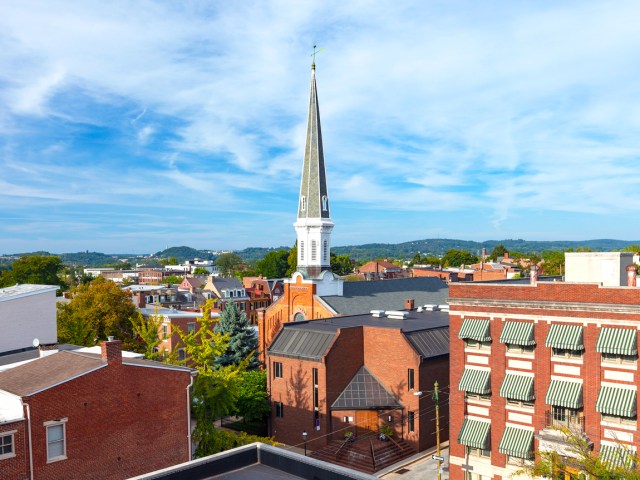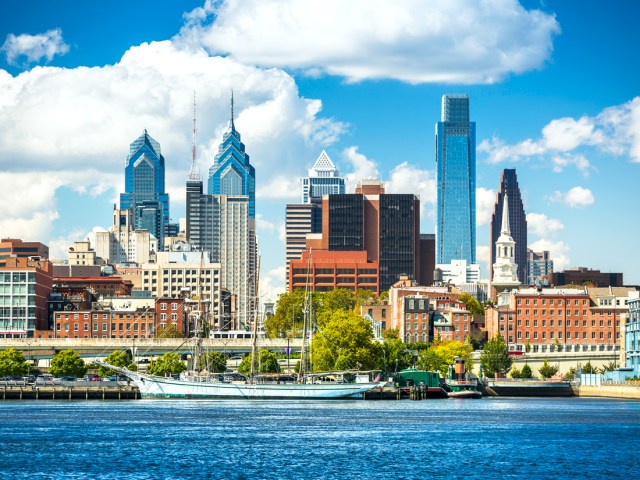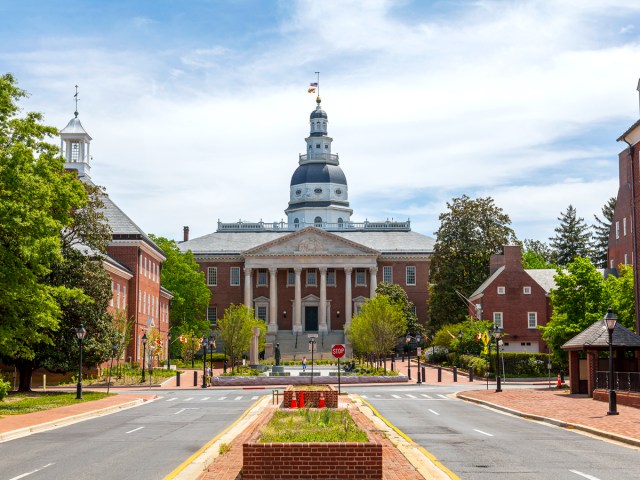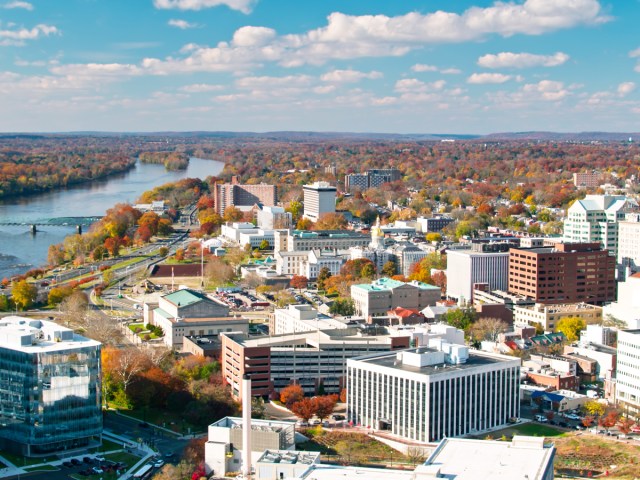We’re taught from a young age that our nation’s capital is Washington, D.C. Perhaps you’ve even visited some of its most famous landmarks, such as the Washington Monument or the Lincoln Memorial. But despite serving as the capital for more than 200 years, D.C. wasn’t always the center of the federal government. In fact, D.C. didn’t even exist in the early days of the nation and didn’t become the official capital until 1800. Take a trip back in time and discover eight former U.S. capitals before before Washington, D.C. you may have forgotten.
Baltimore, Maryland

After initially meeting in Philadelphia, where the Declaration of Independence was signed in 1776, the Continental Congress moved to a new capital in December of that year to evade capture by British troops. To draw as little attention to themselves as possible, delegates held secret meetings at the Henry Fite House, located on West Baltimore Street between South Sharp and North Liberty Streets. Its owner, Henry Fite — who built the tavern and inn in 1770 — rented the house to Congress for a sum of 60 pounds for a period of three months, after which Congress would return to Philadelphia. The building later became known as the Old Congress Hall, but sadly, it was destroyed by fire in 1904.
Lancaster, Pennsylvania

At first glance, Lancaster — now home to some of the nation’s oldest Amish communities — may seem like an unlikely choice for capital of the United States. Perhaps our forefathers agreed, because Lancaster’s stint as capital lasted just one day: September 27, 1777. One day prior, British forces captured Philadelphia, forcing Congress to flee to Lancaster, which at the time was the next-largest town west of Philadelphia.
Interestingly, the delegates also took with them the Declaration of Independence and the Liberty Bell for safekeeping, but they were forced to abandon the latter on the way, successfully hiding it in a church in Allentown during the British raid. While the court house that served as the capital for a single day in 1777 sadly burned down, fortunately, the Liberty Bell is still on display at the Liberty Bell Center in Philadelphia.
York, Pennsylvania

Seeking further protection from the British, Congress moved 25 miles further west to York, which served as the U.S. capital until June 1778. During these nine months, several major events took place in York: The Articles of Confederation were adopted there, and the first National Day of Thanksgiving was proclaimed in the city. However, it wasn’t enough to keep the capital there — to evade British troops again, Congress soon began looking for a new location for the nation’s capital. Today, visitors can explore York’s history as one of the nation’s first capitals at the Colonial Complex.
Philadelphia, Pennsylvania

Known as the birthplace of the United States, Philadelphia is where the Declaration of Independence was signed in 1776 and the Constitution was drafted in 1787. After earlier stints as the national capital between 1774 and 1778, the City of Brotherly Love was chosen to serve as the temporary capital from 1790 to 1800. This was stipulated in the Residence Act of 1790, signed by George Washington, which called for a new national capital to be built on the Potomac River.
However, when the Continental Congress convened in Independence Hall in 1783, delegates faced a mutiny from soldiers in the Continental Army, whom Congress had neglected to pay during the war against the British. Eventually, the legislators sent Alexander Hamilton to negotiate with the angry soldiers. Hamilton approached John Dickinson, Pennsylvania’s head of state, to ask for protection for Congress. For his part, Dickinson saw no reason to commit Philadelphia troops, so the delegates fled to Princeton instead. Today, visitors can explore the early history of the nation at Philadelphia’s Independence National Historical Park.
Princeton, New Jersey

Princeton served as the national capital from June 30 to November 4, 1783. Here, Congress convened in Nassau Hall, which was built in 1756 and remains the oldest building at Princeton University. However, moving the capital from the much-larger Philadelphia to what was, at the time, a small village that had suffered significant damage during the American Revolution, proved difficult. The legislators didn’t dare return to Philadelphia to face the disgruntled soldiers, but since Princeton’s size couldn’t accommodate the growing number of delegates, Congress was forced to make another move after just four months.
Annapolis, Maryland

Congress arrived in Annapolis in November 1783 and stayed until August 1784. It was here that the Treaty of Paris was ratified, officially ending the American Revolution, and it’s also where George Washington stepped down after serving as the country’s first commander-in-chief. But, as fate would have it, America wasn’t finished with Washington yet. Washington was unanimously elected as the president of the Constitutional Convention in 1787, and, on April 20, 1789, America voted him in as the first president of the United States.
Meanwhile, Annapolis turned its attention back to its primary role as the capital of Maryland. In 1845, it became the home of the United States Naval Academy, originally called the Naval School, which opened with seven professors and fifty midshipmen. The Maryland State House, where Congress convened, is the country’s oldest state house in continuous legislative use and the only state house to have also served as the national capital. It’s open daily to the public for self-guided tours.
Trenton, New Jersey

Congress next moved to Trenton, the site of Washington’s first major victory in the Revolutionary War, for the final two months of 1784, choosing to set up the government in a local pub known as the French Arms Tavern. Not much of note happened during this Congressional session. The bright lights of New York were calling, and delegates packed up for New York on Christmas Eve, and the city of Trenton got its tavern back, but unfortunately, the building was torn down in 1837.
New York, New York

On July 26, 1788, New York became the 11th state to ratify the Constitution, making New York City the first U.S. capital post-Constitution. During New York’s stint as the seat of government, Congress met at Federal Hall, though it has since been torn down. Delegates grew uncomfortable putting the national capital under the permanent jurisdiction of any particular state, so Congress decided that it would be better to set aside federal land for the capital.
In 1790, Washington, D.C., was founded on land that once belonged to the states of Maryland and Virginia and was chosen by George Washington himself. Washington tapped French-American engineer Pierre Charles L’Enfant to design the new district. On November 17, 1800, Washington, D.C., officially became the capital of the United States of America.
More from our network
Daily Passport is part of Inbox Studio, which publishes content that uplifts, informs, and inspires.
















